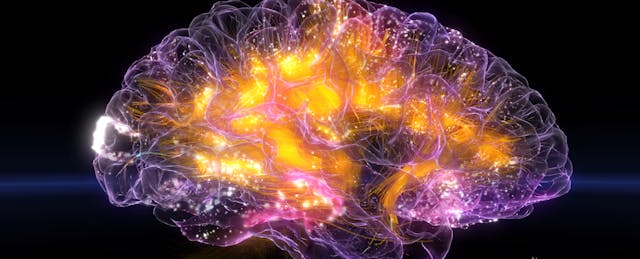On the homepage of the health technology company Akili Interactive, there sits an intriguing line of copy: “Time to Play Your Medicine.”
That tagline serves as something of a futuristic mission statement for the Boston-based company, which focuses on bringing brain-training video games to market and is seeking to produce the first FDA-approved game treatment for attention deficit hyperactivity disorder, or ADHD. If it succeeds, it will be the first alternative to stimulant medication approved for the disorder—they’re calling it “digital treatment.”
Backed by rigorous research, the game, called Project: Evo, now in Phase III clinical trials—and Akili as a whole—were born out of Neuroscape, a neuroscience research lab led by Adam Gazzaley at the University of California, San Francisco.
Gazzaley, a neurologist and neuroscientist by training, was originally searching for experimental treatments to improve brain function using digital technology. Soon after, his team hit on video games as a way to help both kids and adults strengthen executive functioning skills like concentration and attention. Since playing games naturally keeps our motivation high, ADHD might be ideally receptive to the treatment, they reasoned.
Medications and therapeutic approaches for treating ADHD have been around since the middle of the last century. The idea to leverage video games rooted in neuroscience research is much more recent, but early studies into its effectiveness appear promising.
“There’s so much need,” Gazzaley tells EdSurge, “for children with ADHD, to have an alternative other than a stimulant, which is the only FDA-approved treatment now. So it really made sense for us from both an impact point of view, as well as a business point of view, to bring the first non-drug treatment to market.”
The Motivation Factor
Depending on estimates, between 5 and 10 percent of school-aged children have been diagnosed with ADHD, which impacts attention, impulse control and emotional regulation. When a child is diagnosed, parents are currently given a short list of treatment options, including stimulant drugs and behavior modification therapy. Stimulants, or medications such as Ritalin or Adderall, target chemicals in the brain that regulate emotional responses and concentration. They can also come with undesirable side effects, which some parents are wary of. But when they work, they work fast.
“The extraordinary thing about stimulants, which is not true of many other classes of medication, is that you give it on Tuesday and it works on Tuesday,” explains Heidi M. Feldman, a professor of developmental and behavioral pediatrics at Stanford. “It’s a short-acting drug with short-acting effects.”
Yet stimulants, which are taken by about 6 percent of kids in the U.S., don’t address underlying causes. It’s like taking an aspirin for a toothache, Feldman explains: It only offers symptom relief. For this reason, these drugs are often prescribed alongside behavior modification therapy, which takes much longer to work, Feldman says. And unlike stimulants, which are administered directly to the child, behavior modification relies on a licensed behavioral therapist training parents and teachers to implement strategies on a day-to-day basis.
While ADHD limits attention, it doesn’t diminish it entirely. Feldman says kids with the disorder can often concentrate on certain activities for long periods of time when their motivation is high. She singles out video games as a common example. The challenge, she adds, is keeping motivation high for kids during activities, such as homework, when it’s typically low.
To increase motivation, behavior modification strategies often reward positive interactions and discourage negative ones. Some approaches seem like they’re straight out of a video game. Feldman describes one as a “token economy,” where kids are given chips when they demonstrate the target behavior and lose chips when they do not. At the end of the day, kids receive a prize if their token balance is net positive. In general, behavior therapy works when rewards and consequences are immediate and frequent so that children learn to distinguish appropriate actions from inappropriate ones.
To video game enthusiasts, the token economy might resemble the golden coins in Super Mario Bros., where players win coins for navigating the game carefully but lose them for slipping up.
Over time, the idea is that kids need these external motivators less and less. “Ideally, like the rest of us, as we get older, those external signals go internal,” Feldman says, meaning they become self-regulated. “This kind of thing really does work.”
One issue with the treatment: supply hasn’t quite caught up to demand. “A lot of people are keen on behavior management and the struggle is there aren’t enough resources to meet the needs,” Feldman says. In other words, because it relies on human training and interaction, it doesn’t scale like technology. That’s where Gazzaley’s video game treatment might have an edge.
Closing the Loop
ADHD isn’t the only area Gazzaley’s Neuroscape team is invested in. They’re also researching how video games can improve aging minds and even whether brain stimulation via electrical currents can boost cognitive abilities. But games make up the lion’s share of the team’s work.
Since its founding in 2005, the lab has tested a variety of games. Some use principles of meditation and mindfulness, while others use music and rhythm. And one collection of games borrows from interactive consoles like the Nintendo Wii to integrate physical fitness challenges with cognitive ones. But they all have something in common: the closed loop system.
Generally speaking, a loop is simply a way to provide feedback to a player. When a player performs an action like clicking a button, the game, in accordance with the rules, delivers an outcome, good or bad. That’s called “closing the loop,” and in Neuroscape games, it’s a very rapid process. Challenges and rewards are constantly being updated based on real-time data collected from the player. For a child with ADHD, the idea is to provide frequent feedback and motivation while training neural networks to sustain attention.
Each game is based on years of research and designed to target different neural systems intentionally. And unlike many brain training games and apps on the market, Gazzaley tries to infuse as much production value and narrative as possible so they look and play much like a major studio effort. Because these games are primarily in research phase, none are in wide release.
“We’re still testing and testing, so the degree that we take these games through double-blind, randomized control trials, is also a unique aspect of them,” Gazzaley says.
Currently, the lab has six randomized control trials in process involving control groups and placebos. They look at brain activity and other physiological measures, such as stress response and mood. “We want to understand the full scope of how these games could induce change across the entire array of human performance,” Gazzaley adds.
Training the Brain
Back in 2008, Gazzley’s team created Neuroracer, an early experiment in brain training. Players use a controller to navigate a fast car along a twisting road. Designed for a single player, it’s not a traditional racing game. Instead, players compete against their own reflexes. In addition to keeping the car from straying into the shoulders on either side, they must also react in split seconds to green or red signals, which require them to either hit a button or ignore, and are designed to trip up the distracted or complacent player.
That the game requires a high degree of multitasking is no accident. It’s by design. Players score higher when they stay in the center of the road and ignore the trick signals. They do worse when they focus more on one task than another.

According to Gazzaley, the games literally retrain the brain, or more specifically the neural networks responsible for skills like paying attention. “The goal is to strengthen the networks that involve the prefrontal cortex”—the part of the brain responsible for controlling executive function—“so that other tasks that are different but use similar networks, are strengthened,” he explains.
Improving concentration and reflexes within a video game is one thing. But being able to apply those same skills outside the game environment, known as transfer of learning, is much more challenging. Any intervention that can show transfer in research trials is generally considered successful.
Such was the case in a study that Gazzaley co-authored in 2013, which made the cover of international science journal, Nature. In it, the researchers found that playing Neuroracer helped older adults improve overall multitasking compared with a control group of untrained 20-year-olds. And gains weren’t short-lived, but persisted for as long as six months after the training ended. When participants were tested on other cognitive abilities, such as working memory and attention, they showed improvements as well, which served as a significant indication that transfer had taken place.
In recent years, Neuroracer has received a significant retooling with improved graphics and a progressive storyline, picking up the Project: Evo name along the way. It’s also moved out of the lab and over to Akili, the private company Gazzaley spun out of Neuroscape, which manages the games as clinical treatments, rather than research projects.
Instead of driving a car, players now control a more human-like avatar. Project: Evo looks like any other tablet-based game kids might tap on during a long car ride. But it still retains the same basic brain-training focus on multitasking.

The research coming out of the lab suggests the treatment is effective. A recent study of more than 300 participants found that kids who used a Project: Evo game showed significant improvements on a special test designed to assess attention compared with a control group that played a different, non-brain-training video game.
Another study of 57 children with sensory processing disorder (half of whom displayed ADHD symptoms) found encouraging results in overall sustained attention after playing a Neuroscape game 30 minutes a day at home for four weeks (which is considered a full dose of treatment). After the study, a third of the kids with sensory processing disorder were no longer considered inattentive. And parents reported gains persisting as long as nine months after the treatment.
Gazzaley’s ultimate goal is to see the game receive FDA approval and become the first video game treatment for ADHD, and possibly other conditions in the future.
“Once it is FDA-approved, then we will be moving to market with a treatment that will be hopefully be prescribed by doctors, either in place of stimulants, or alongside them,” he says.


